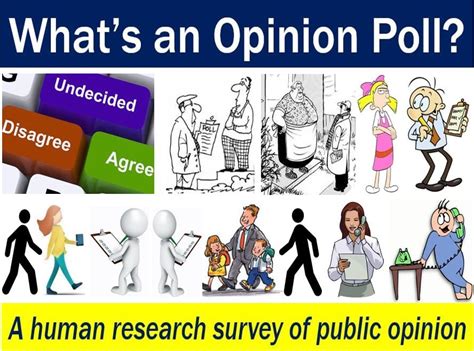Definition
An opinion poll, also known as a public opinion poll, is a systematic survey of a sample of the population designed to provide insights into the opinions, attitudes, and beliefs of the wider population. In AP Government, opinion polls play a crucial role in understanding public sentiment on a range of political issues, from candidate preferences to policy positions.

Types of Opinion Polls
There are two main types of opinion polls:
- Cross-sectional polls: These polls survey a sample of the population at a single point in time, providing a snapshot of public opinion at that moment.
- Trend polls: These polls track public opinion over time, allowing researchers to identify changes in attitudes and opinions.
Methodology
Opinion polls are conducted using a variety of methods, including:
- Telephone polling: Interviews conducted over the phone with randomly selected respondents.
- Mail polling: Surveys sent to randomly selected addresses, with respondents returning completed surveys by mail.
- Online polling: Surveys conducted via the Internet, with respondents recruited through email or website advertisements.
Importance and Benefits
Opinion polls provide valuable insights into public opinion on key political issues. This information is used by politicians, policymakers, and interest groups to:
- Gauge public sentiment on specific policies or candidates
- Identify areas of consensus or disagreement within the population
- Monitor changes in public opinion over time
- Develop targeted political campaigns and policy initiatives
Limitations and Challenges
While opinion polls can provide valuable insights, they are not without limitations:
- Sampling error: The results of an opinion poll are only an estimate of the true population opinion, with a certain margin of error.
- Response bias: Respondents may misrepresent their true opinions or provide socially desirable answers.
- Non-response bias: If a significant number of randomly selected individuals decline to participate, the poll results may not accurately reflect the broader population.
Strategies for Effective Opinion Polling
To mitigate the limitations of opinion polls, researchers should employ sound methodologies, including:
- Using random sampling techniques to ensure a representative sample
- Minimizing response bias through anonymous surveys and carefully worded questions
- Weighting responses to account for non-response bias
- Conducting post-poll validation to assess the accuracy of the results
Conclusion
Opinion polls are a valuable tool for understanding public opinion and informing political decision-making. By employing sound methodologies and being aware of the potential limitations, researchers can produce accurate and reliable polls that provide insights into the wants and needs of the public.
Tables
Table 1: Types of Opinion Polls
| Type | Description |
|---|---|
| Cross-sectional polls | Survey a sample of the population at a single point in time |
| Trend polls | Track public opinion over time |
Table 2: Methods of Opinion Polling
| Method | Description |
|---|---|
| Telephone polling | Interviews conducted over the phone with randomly selected respondents |
| Mail polling | Surveys sent to randomly selected addresses, with respondents returning completed surveys by mail |
| Online polling | Surveys conducted via the Internet, with respondents recruited through email or website advertisements |
Table 3: Limitations of Opinion Polls
| Limitation | Description |
|---|---|
| Sampling error | The results of an opinion poll are only an estimate of the true population opinion, with a certain margin of error |
| Response bias | Respondents may misrepresent their true opinions or provide socially desirable answers |
| Non-response bias | If a significant number of randomly selected individuals decline to participate, the poll results may not accurately reflect the broader population |
Table 4: Strategies for Effective Opinion Polling
| Strategy | Description |
|---|---|
| Using random sampling techniques | Ensures a representative sample |
| Minimizing response bias | Anonymous surveys and carefully worded questions |
| Weighting responses | Accounts for non-response bias |
| Conducting post-poll validation | Assesses the accuracy of the results |
